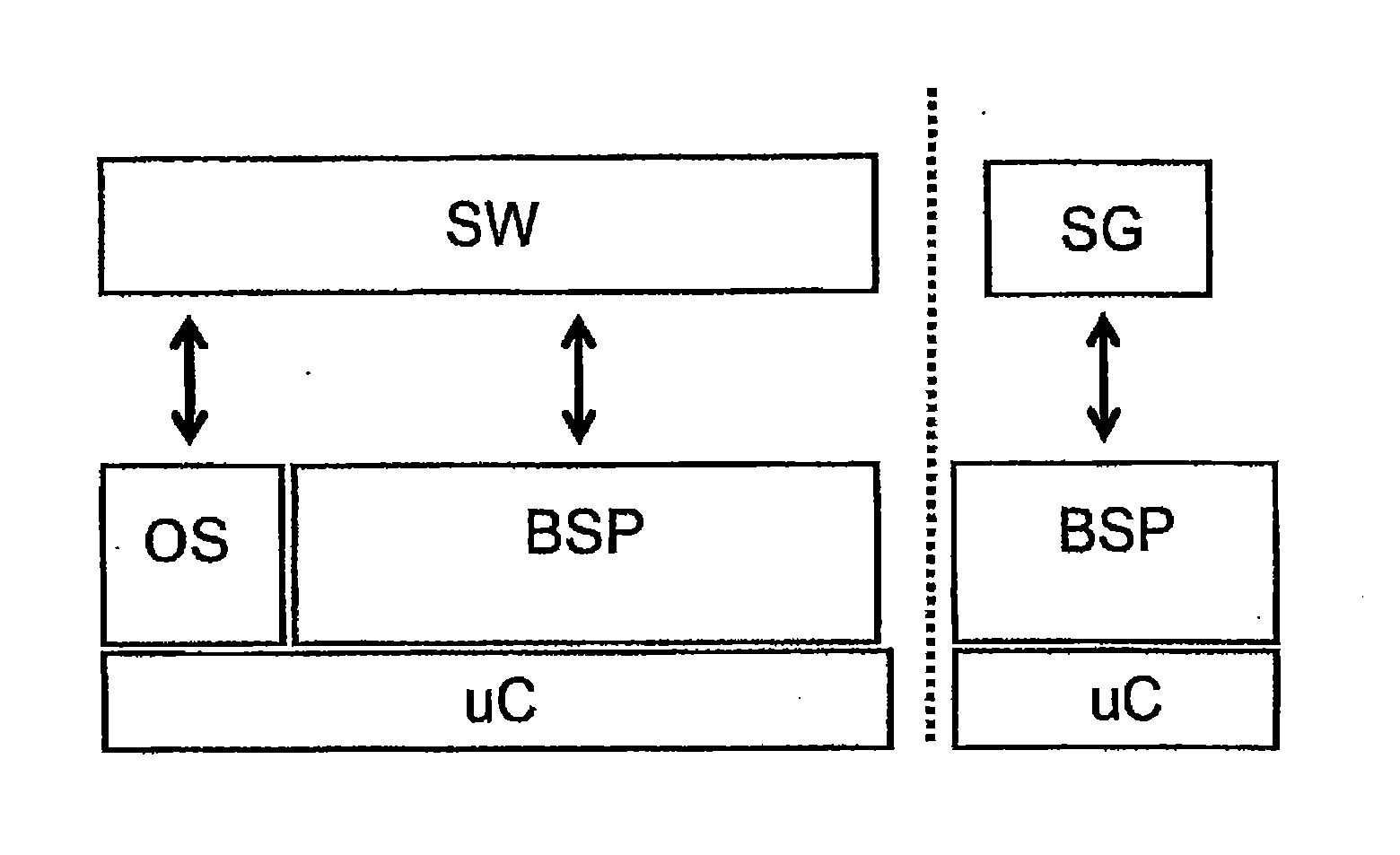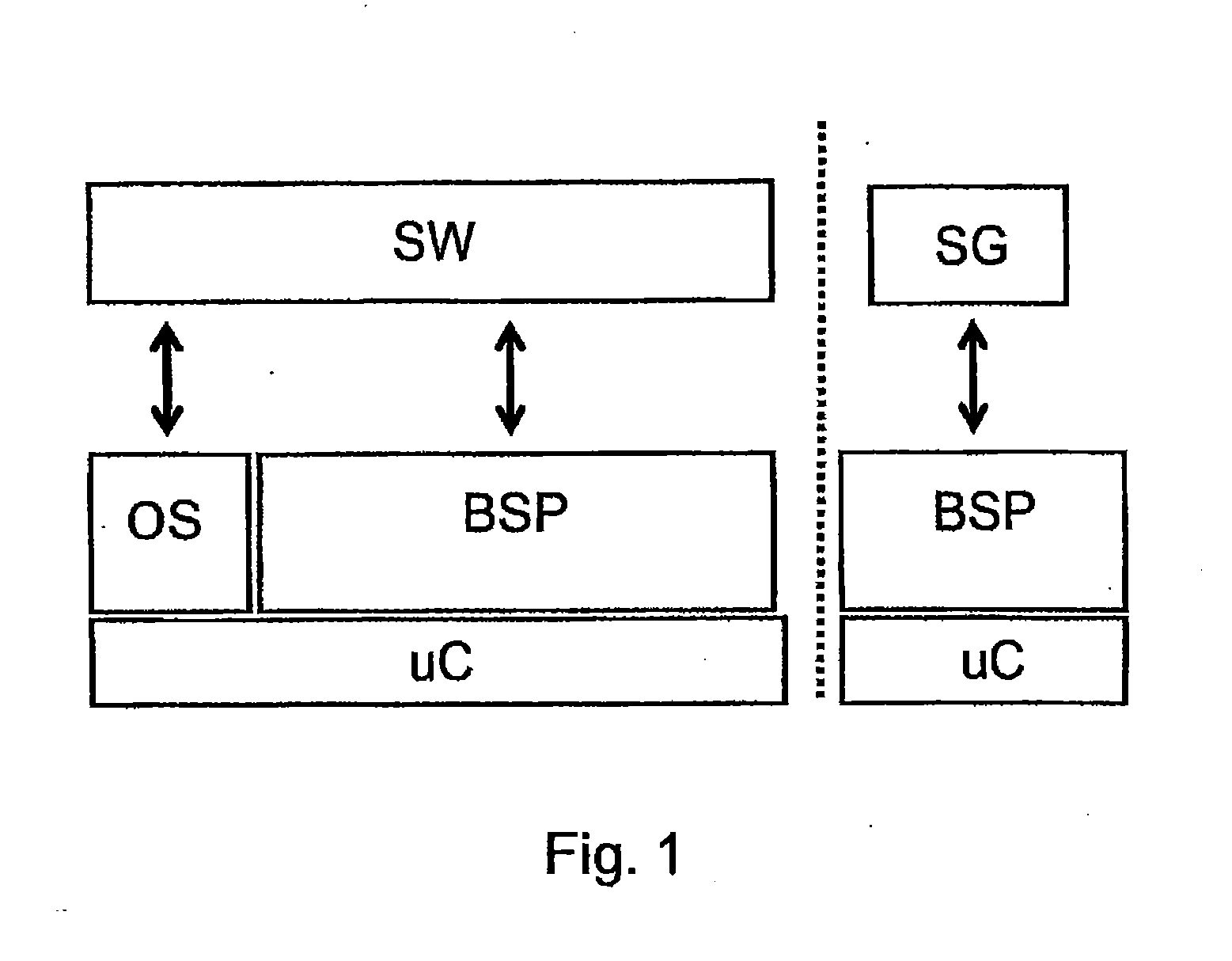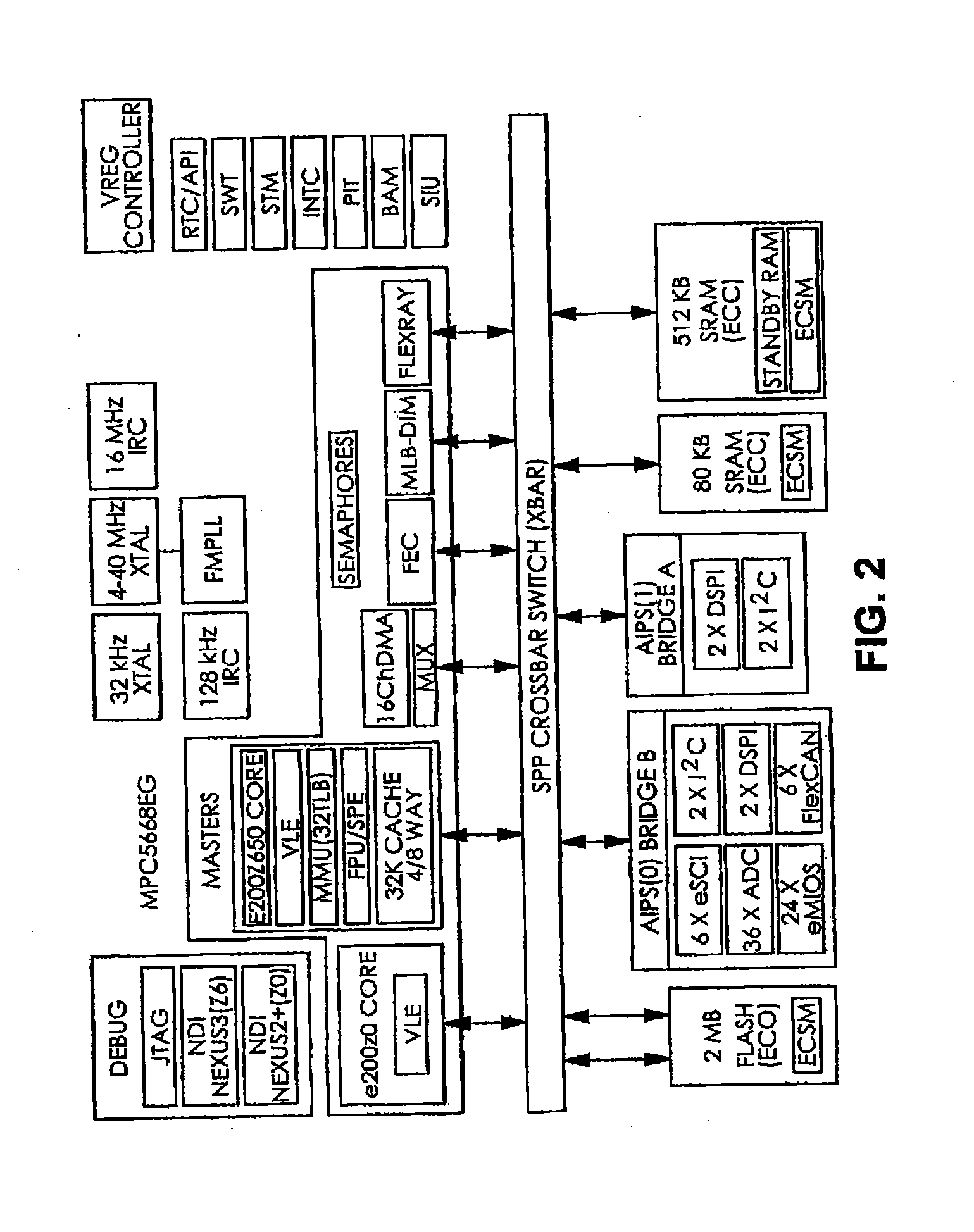Functional architecture pattern for safety related applications
a functional architecture and safety-related technology, applied in the field of functional architecture patterns, can solve the problems of requiring expensive hardware and software designs, requiring significant added costs to the overall system, and functional safety standards requiring time-consuming design and certification
- Summary
- Abstract
- Description
- Claims
- Application Information
AI Technical Summary
Benefits of technology
Problems solved by technology
Method used
Image
Examples
Embodiment Construction
[0019]It is to be understood that the invention may assume various alternative orientations and step sequences, except where expressly specified to the contrary. It is also to be understood that the specific devices and processes illustrated in the attached drawings, and described in the following specification are simply exemplary embodiments of the inventive concepts defined in the appended claims. Hence, specific dimensions, directions or other physical characteristics relating to the embodiments disclosed are not to be considered as limiting, unless the claims expressly state otherwise.
[0020]Table 1 lists some of the abbreviations used throughout the disclosure.
TABLE 1AbbreviationsBSP: Board support packagesECC: Error correction codeinet: Internet sourceMMU: Memory management unitMSR: Machine status registerPDF: Portable document formatPID: Process identifierQM: Quality ManagementRAM: Random Access MemoryRTOS: Real-time operating systemSG: Safety goal(s)SPS: Sharepoint siteSW-C:...
PUM
 Login to View More
Login to View More Abstract
Description
Claims
Application Information
 Login to View More
Login to View More - R&D
- Intellectual Property
- Life Sciences
- Materials
- Tech Scout
- Unparalleled Data Quality
- Higher Quality Content
- 60% Fewer Hallucinations
Browse by: Latest US Patents, China's latest patents, Technical Efficacy Thesaurus, Application Domain, Technology Topic, Popular Technical Reports.
© 2025 PatSnap. All rights reserved.Legal|Privacy policy|Modern Slavery Act Transparency Statement|Sitemap|About US| Contact US: help@patsnap.com



